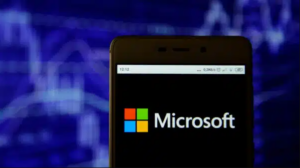Before investing in paid media, B2B brands should optimize these foundational elements for better campaign ROI.
Most B2B marketers, regardless of brand or agency experience, have likely faced this scenario: a marketer in charge of budget insists on investing in PPC campaigns despite evident issues that will hinder their effectiveness.
We’ve worked with some of those clients before, attempting to address issues while managing paid media simultaneously – similar to building a plane while flying it. However, this approach rarely succeeded. Typically, clients failed to recognize the value of paid media, resulting in budget cuts, which was a predictable outcome.
These days, we’re resolute in asking clients to address their issues first or working with them to build a better foundation before we build any media campaigns.
Below are common issues early-stage brands must be addressed before spending a dollar on media. These include:
- CRM setup.
- Lead follow-up strategies.
- Mobile website UX.
- Ad-to-landing page alignment.
- Audience understanding.
- Performance expectations.
1. CRM setup
The most common issues for CRM setup revolve around tracking, as well as lead scoring and progression.
Tracking-wise, clients are often missing the basics for the fields to pass along the right info (campaign, source, medium, click IDs, etc.). If those aren’t set up properly, we’re not getting the data, which means we can’t get into the back end and figure out how our efforts are working to drive business.
We can see conversion data in each platform’s UI. Still, without understanding which campaigns drove down-funnel results like opportunities or revenue, or even MQLs, it’s almost impossible for us to optimize the client’s budget.
Speaking of back-end data, clients need to have a way to score leads and/or track their progression through the funnel for us to understand what’s truly working. Without that data, we can’t go much further than understanding how many leads we drove – which means brands could be perpetually throwing money at junk leads.
If you can’t look in your CRM and state, with confidence, where your best leads and opportunities are coming from, you’re not ready to run paid campaigns.
Dig deeper: 2024 B2B trends: 6 key areas for marketing success
2. Lead follow-up strategies
Let’s say you turn on media campaigns and drive a bunch of leads squarely in your target audience. Great! What are your next steps for engaging and guiding those leads through the purchase journey?
Ideally, you’d have your outreach and email nurture process dialed in, with triggers based on the level of intent. But top SaaS companies take an average of two days to get back to users requesting demos, per a 2023 ChiliPiper report. This is about as high-intent as it gets for B2B.
If you can’t explain what happens when a qualified lead hits your CRM at every stage of the funnel, that’s reason enough not to spend on leads. The worst-case scenario: you spend money, you drive leads, and the leads go neglected and give up on your company, which means you’ve spent money to ding your reputation.
3. Mobile website UX
Optimizing mobile landing pages for conversions is crucial for making the most of your paid media. Basics like optimizing lead gen forms are table stakes, but we still see brands with UX that’s frustrating enough to get users coming from the most aligned, high-intent queries to bounce.
Before you put any campaigns in place, ensure your mobile users will get a good experience when they hit your site.
For instance, we still see brands coming to us with mobile landing pages (LPs) that hit the user with a form without explaining the benefits or next steps above the fold, which hampers paid campaign performance out of the gate, no matter how tight the query/ad/LP alignment.
4. Ad-to-landing page alignment
Speaking of ad-to-LP alignment, do a couple of basic checks to make sure the flow isn’t out of whack.
- Your ad call to action (CTA) and your landing page CTA must be the same (or at least extremely similar).
- The experience should match the expectations you’ve set up for the user when they visit your site.
Better yet, make sure the keyword intent and the landing page are aligned. For instance, if it’s a more top-of-funnel keyword, the homepage or services page might be fine.
In contrast, comparison or competitor takedown keywords should go either to a page explaining your differentiators or a page showing a comparison chart.
My other recommendation is to make sure your CTA aligns with keyword intent. For instance, if you’re bidding on educational keywords (e.g., “how do I…?”), try asking the users to subscribe to a blog or newsletter as a starting point so you can capture their data for nurturing purposes.
5. Audience understanding
Let’s see if you can answer these questions:
- Who benefits most from your product or service?
- What problem or challenge do you solve for your audience?
- Are they even aware they have that problem?
Most brands can answer the second question, but the first can produce murkier answers, and the third is a toss-up.
Can’t answer all of them? That will hamper the efficiency of your targeting, and you might not understand that you have to build awareness (say, on Meta or LinkedIn or the Google Display Network) before leaning into search to try to capture intent that doesn’t exist.
6. Performance expectations
If you need to drive more revenue in the next week or two, it won’t happen just by turning on B2B paid media campaigns. Whether you’re setting your expectations or figuring out how to communicate to your higher-ups, you need to understand that it takes time to dial things in.
For new campaigns, you’ll need time to analyze whether your audience reacts well and whether there’s a product-market fit.
Moreover, for any campaign using machine learning (e.e., LinkedIn, Google’s Performance Max, Meta’s Advantage+ campaigns) to help with targeting, you’ll need to feed the algorithms enough volume (and hopefully offline conversion tracking data) to help them optimize.
Combine that with B2B’s long sales cycle (rare is the click that leads directly to a closed-won), and you need to build in time for any new campaigns to bear fruit in the form of revenue.
Dig deeper: A guide to effective PPC projections
Essentials for high-performing B2B paid media campaigns
If you can confidently say that none of the above is an issue, you’re ready to start testing paid campaigns.
That said, even mature companies can use a reminder to do some sanity checks and refreshes on the above initiatives. Either way, a little tune-up of the fundamentals will go a long way to improving the ROI of any media campaigns to follow.




